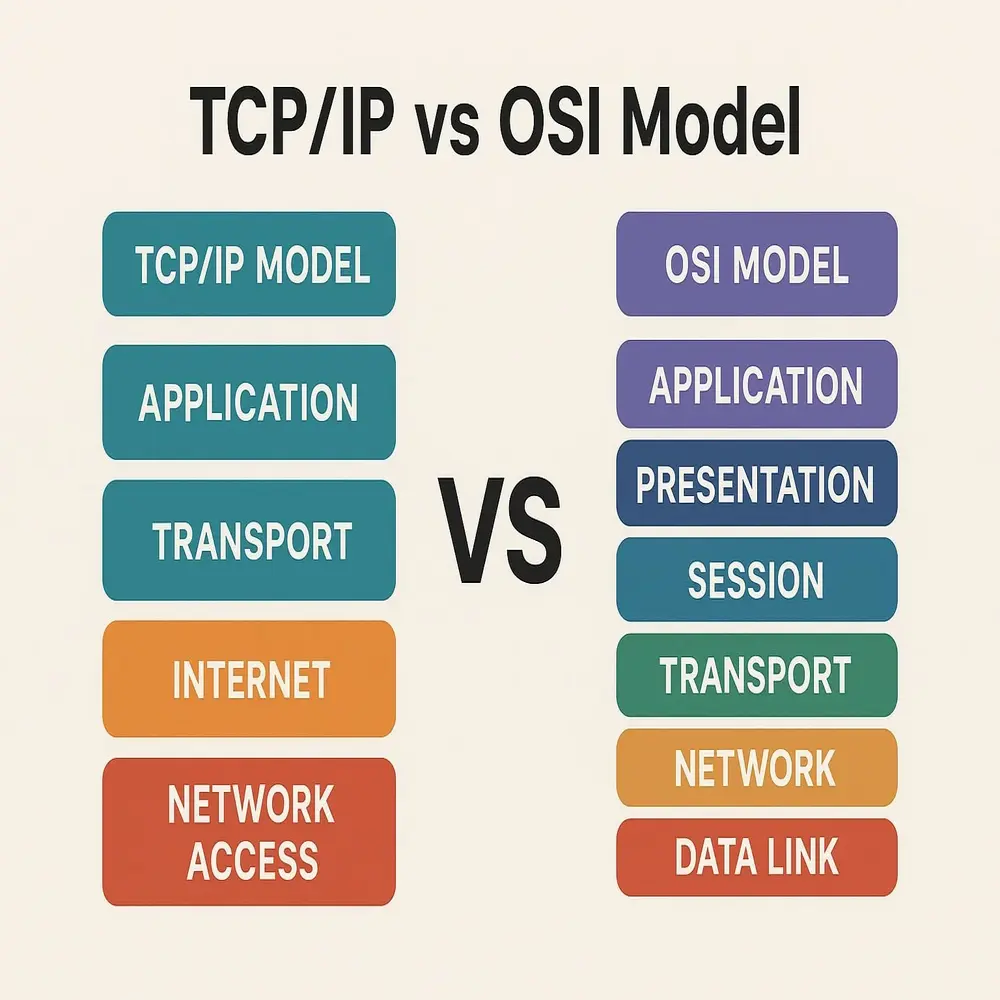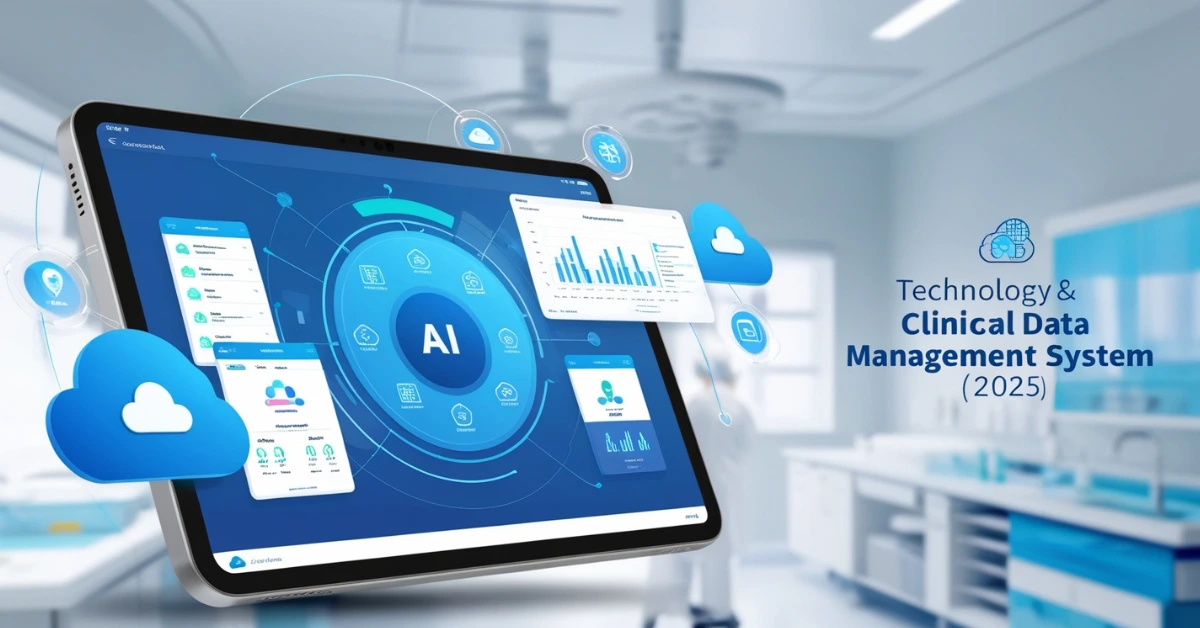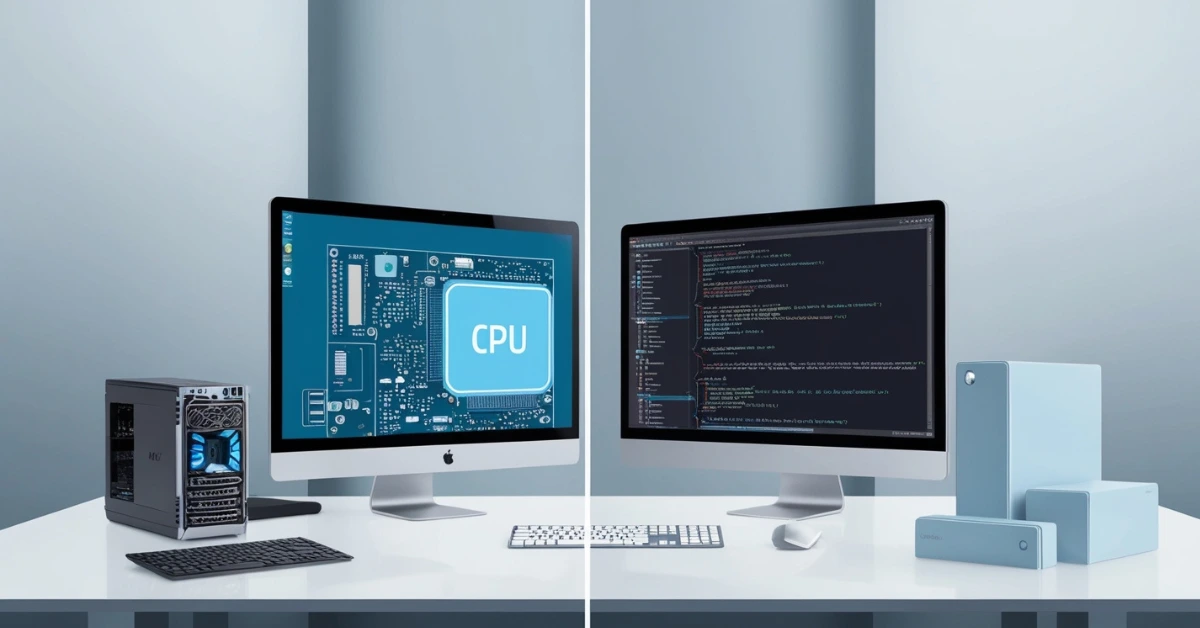When your phone shows a web page, or you’re chatting with friends online, information travels through many small steps. Two helpful models explain how this works: TCP/IP and OSI. One is practical and used almost everywhere; the other is a detailed framework to understand and teach.

What is the OSI Model?
The OSI (Open Systems Interconnection) model was made back in the early 1980s to help people learn how networks work. It splits communication into seven layers, each with its own job:
- Physical Layer: This is the actual wires, cables, and electrical signals.
- Data Link Layer: Structures data into frames and uses MAC addresses for local device communication.
- Network Layer: Decides how data travels from one network to another, using IP addresses and routers .
- Transport Layer: Ensures data arrives in order and without loss, using TCP or UDP
- Session Layer: Manages talking sessions between apps like starting, stopping, and reconnecting
- Presentation Layer: Makes sure the data is readable and secure (think encryption or format translation)
- Application Layer: The layer where your app lives like web browsers or email tools
Pros of OSI Model
- Breaks networking into clear steps useful for learning and teaching.
- Easier to identify and fix issues because you know which layer might be the problem
- Protocol-independent you can mix different technologies without changing the model.
Cons of OSI Model
- Too many layers for real world use not used directly by networks
- Harder to implement because it’s more theoretical.
What is the TCP/IP Model?
The TCP/IP model (called after its main protocols: Transmission Control Protocol and Internet Protocol) was built around the actual tools the internet uses. It has four layers, each tied to real protocols .
- Network Interface Layer: This layer merges the functions of both the Physical and Data Link layers from the OSI model, handling the hardware-level transmission of data across network devices.
- Internet: Similar to OSI’s Network layer. IP moves packets across networks .
- Transport Layer: It uses TCP to ensure data is delivered accurately and in the correct order, while UDP provides a faster transmission method with minimal error checking and no guaranteed delivery sequence
- Application Layer :This layer combines the responsibilities of the OSI model’s Session, Presentation, and Application layers. It supports various communication protocols such as HTTP, FTP, and SMTP, enabling direct interaction between user applications and the network.
Pros of TCP/IP Model
- Built using real protocols, what runs the internet today .
- Simpler with fewer layers, so easier to design and use.
- Directly linked with standards set by groups like IETF
Cons of TCP/IP Mode
- Less clear cut separation multiple duties in one layer can make deeper debugging harder.
- Tied closely to existing protocols, making it less flexible for future changes.
Main Differences in One Table
| Feature | OSI (7 layers) | TCP/IP (4 layers) |
| Origins | Designed by ISO as a teaching framework | Made by DARPA/IETF for real world use |
| Layer Count | Seven | Four |
| Use Case | Educational, ideal for breakdown | Practical, used by internet systems |
| Protocol Tied? | No, any protocol fits | Yes built around specific protocols |
| Complexity | More detailed and granular | Simpler, less granular |
| Troubleshooting | Easy to isolate issues | Layers are broader harder to pinpoint |
How They Work in Everyday Life?
- When you load a website
-
- TCP/IP: Data starts at Application (e.g., HTTP), goes via Transport (TCP), is sent over Internet (IP), travels on Link layer, and arrives at the server.
- OSI model: Data flows through all 7 layers: formatted at Application/Presentation, session opened at Session, emails are segmented at Transport, routed at Network, framed at Data Link, and carried physically.
- Why both models matter
-
- For real apps and networks, TCP/IP is what’s actually used.
- For learning networking, OSI helps you think clearly about different parts
Similarities Between Both Models
- Layered design: Data moves layer by layer.
- Encapsulation: Every layer adds a unique header to data to guide correct processing and delivery.
- Shared goals: Both aim for standardized, understandable data communication.
When to Use Which Model?
- OSI is best for studying, teaching, or troubleshooting because of its clear separation.
- TCP/IP is what you use in the real world configuring routers, setting up networks, writing apps.
Conclusion
The OSI model is great for learning how networks work, while the TCP/IP model shows how the internet runs in real life. Knowing both helps you understand, build, and fix networks more effectively.



